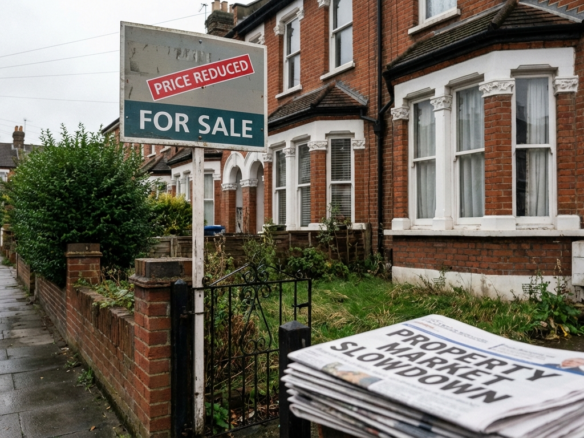France’s property tax landscape is undergoing dramatic changes in 2025, with some regions experiencing unprecedented increases that are reshaping the real estate market. These tax hikes, driven by updated property valuations and local fiscal policies, are creating significant financial pressure on homeowners across the country. Understanding which areas face the steepest increases has become crucial for current and prospective property owners navigating this challenging environment.
Get 50% OFF!
Subscribe to our newsletter and enjoy a 50% discount on all listing packages, no strings attached!

The impact of these tax rises extends far beyond simple numbers on bills, affecting property values, investment decisions, and household budgets nationwide. With some communes seeing increases of over 30%, the geographical distribution of these hikes reveals important patterns that every property stakeholder should understand.
France Property Tax Surge: 2025’s Biggest Increases
The 2025 property tax increases represent the most significant surge in French property taxation in over a decade. National averages show increases ranging from 8% to 15%, but these figures mask the dramatic variations occurring at local levels. The primary driver behind these increases stems from the revaluation of property values based on 2023 market data, combined with local authorities’ need to boost revenue following post-pandemic budget pressures.
Several factors have converged to create this perfect storm of tax increases. Rising construction costs, increased property values during the pandemic boom, and municipalities’ growing infrastructure needs have all contributed to the current situation. The government’s decision to update property valuations more frequently has also accelerated the impact, bringing tax assessments closer to actual market values than they have been in years.
Which Regions Face the Steepest Tax Hikes This Year
The Île-de-France region dominates the list of areas with the most severe tax increases, with some communes experiencing rises exceeding 35%. Within this region, the following areas stand out for their dramatic increases:
- Hauts-de-Seine: Average increases of 28-32%
- Val-de-Marne: Rises ranging from 25-30%
- Seine-Saint-Denis: Increases between 22-28%
- Yvelines: Tax hikes of 20-25%
Beyond the Paris region, other significant hotspots include parts of the French Riviera, particularly around Cannes and Nice, where increases of 25-30% are common. The Loire Valley, traditionally seen as affordable, is experiencing unexpected surges of 18-22% in popular tourist communes. Ski resort areas in the Alps, including parts of Savoie and Haute-Savoie, are seeing increases of 20-28% as mountain property values continue their upward trajectory.
Paris and Suburbs Lead the Property Tax Explosion
Paris itself presents a complex picture, with arrondissements showing varied increases depending on recent property market performance. The 7th, 8th, and 16th arrondissements are experiencing the most dramatic rises, with increases averaging 30-35%. These prestigious areas have seen property values soar, directly translating into higher tax assessments that reflect current market realities.
The suburban belt around Paris tells an even more dramatic story. Communes like Neuilly-sur-Seine, Boulogne-Billancourt, and Saint-Cloud are witnessing increases that exceed 35% in some cases. The appeal of suburban living, accelerated by remote work trends, has pushed property values in these areas to new heights. Families who moved to these suburbs seeking better value are now facing tax bills that reflect their properties’ newfound desirability and market premium.
Rural Areas vs Cities: Where Taxes Hit Hardest
Contrary to expectations, many rural areas are experiencing surprisingly steep tax increases, though the absolute amounts often remain lower than urban centers. Popular rural destinations, particularly those within commuting distance of major cities or known for tourism, are seeing increases of 15-25%. The Dordogne, long favored by British buyers, shows increases averaging 18-20%, while Provence villages popular with second-home buyers face rises of 20-25%.
Traditional rural farming communities are generally experiencing more moderate increases of 8-12%, closer to national averages. However, any rural commune with scenic appeal, historical significance, or good transport links to cities is facing much steeper rises. The digital nomad trend and increased remote work flexibility have brought urban money into previously affordable rural markets, driving up both property values and subsequent tax assessments across these once-quiet regions.
What These Tax Rises Mean for French Homeowners
Current homeowners are facing immediate budget pressures as these tax increases translate directly into higher annual bills. For a property previously taxed at €2,000 annually, a 25% increase means an additional €500 per year, a significant sum for many households already dealing with inflation pressures. These increases are particularly challenging for retirees on fixed incomes and families who stretched their budgets to purchase homes during the pandemic property boom.
The broader implications extend to property market dynamics and future investment decisions. Higher ongoing costs are beginning to cool buyer enthusiasm in the most affected areas, with some properties staying on the market longer as buyers factor in the increased tax burden. For sellers, the challenge lies in pricing properties competitively while ensuring buyers understand the full cost of ownership. These tax changes are essentially redistributing the appeal of different regions, making previously overlooked areas more attractive while dampening enthusiasm for traditional hotspots.
The 2025 property tax increases across France represent a fundamental shift in the cost of property ownership, with geographic patterns that reflect changing lifestyle preferences and market dynamics. While Paris and its suburbs face the steepest increases, no region remains completely unaffected by this nationwide adjustment. Understanding these changes is essential for making informed decisions about property ownership, whether you’re considering a purchase, evaluating your current holdings, or planning for future tax obligations. The key lies in recognizing that these increases, while challenging, reflect the underlying strength and desirability of France’s property markets in their respective regions.





Join The Discussion